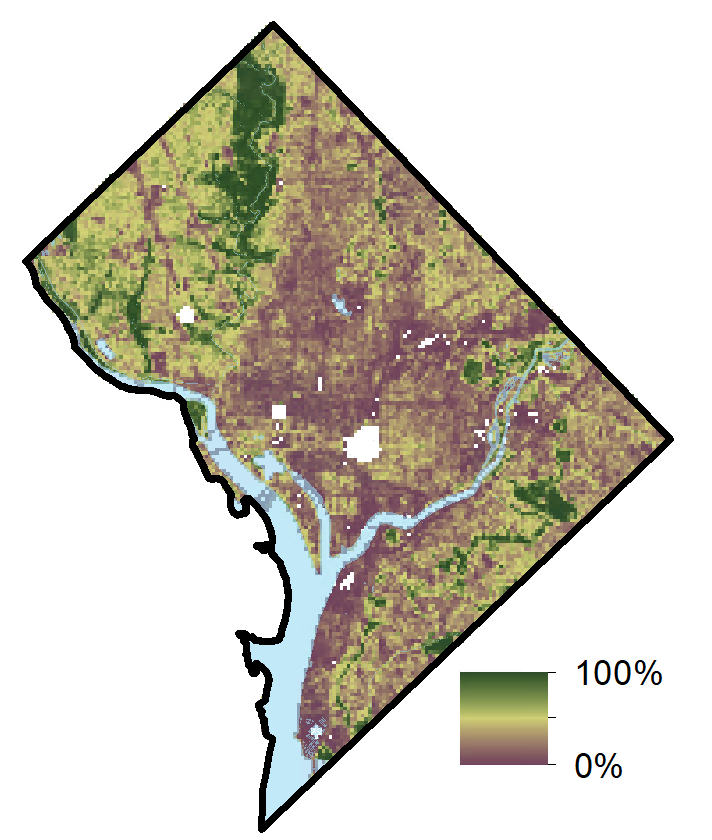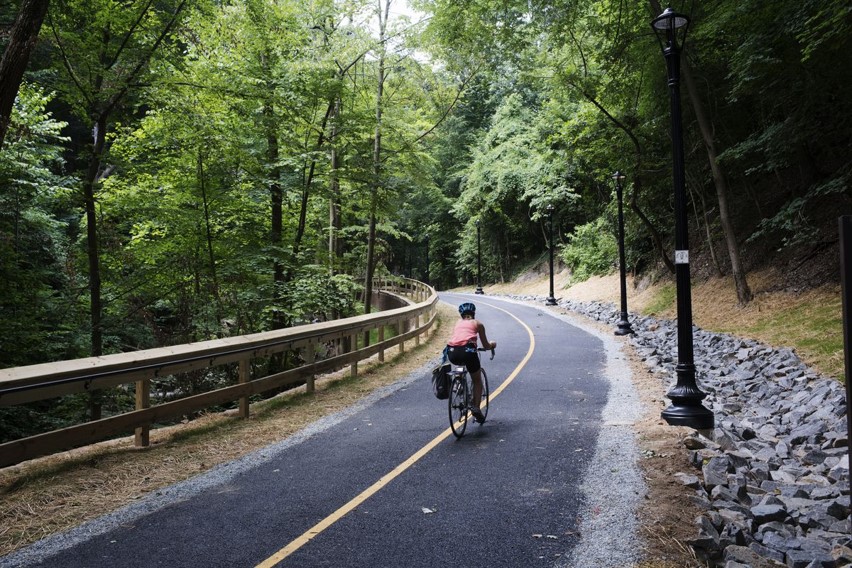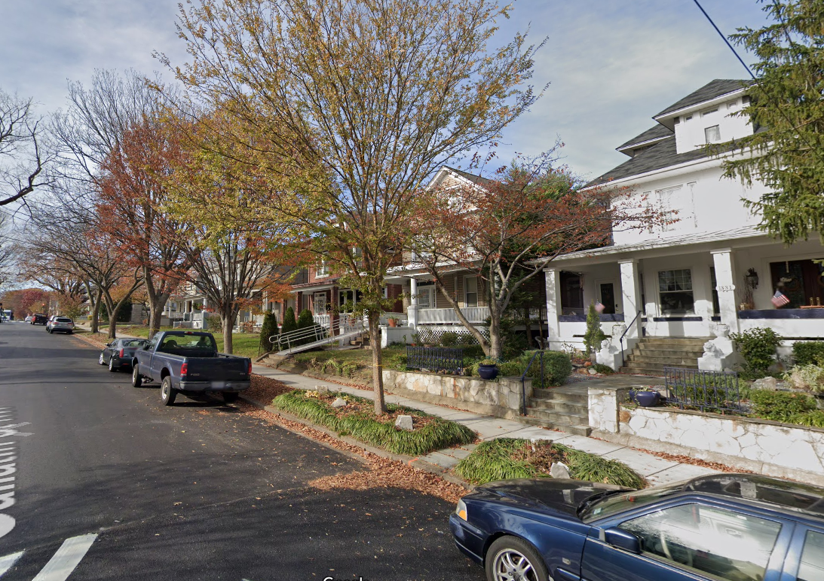Extreme heat is on the rise, and people in urban areas with minimal tree canopy are especially susceptible to its harmful effects. Urban tree planting projects have proliferated in recent years, because trees are associated with lower urban temperatures, are relatively low-cost, and offer numerous benefits beyond cooling. A new study in Environmental Research Letters describes nuances of how trees affect temperature in cities. The research findings could have a major public impact by helping urban planners reap the greatest benefits from tree planting efforts and protect their most vulnerable residents.
“Urban heat is a big deal, and tree canopy can help,” says Matthew Baker, second author on the study and a professor of geography and environmental systems at UMBC. Trees can shade heat-trapping surfaces, such as roads, roofs, and sidewalks. Transpiration from trees is also important to consider, but has gotten less attention. In transpiration, trees release water through their leaves that cools the air when it evaporates.
Both shading and transpiration are important contributors to cooling-by-trees, but they offer the greatest benefits in different conditions. “Different kinds of canopy do different kinds of work,” explains Baker, who also serves as associate dean for faculty affairs in the College of Arts, Humanities, and Social Sciences at UMBC. For example, trees above paved surfaces function differently than those above unpaved surfaces.
The new paper, which was funded by the National Science Foundation’s Geography and Spatial Sciences program, found that all the differences the researchers examined affect the role that trees play in cooling. Understanding which kinds of canopy could help the greatest number of residents most during heat events could improve quality of life in cities—and even save lives.

Canopy type matters
Baker and colleagues, including lead author Michael Alonzo at American University, analyzed more than 70,000 air temperature measurements collected on a hot summer day in 2018 in Washington, DC. They collected data using sensors attached to vehicles in the pre-dawn hours, during afternoon peak heat, and in the evening along different routes throughout the city.
In addition to looking at the effect of time of day, the researchers separated “hard canopy” (tree canopy above impervious surfaces, such as streets or rooftops) and “soft canopy” (tree canopy above unpaved surfaces, such as in yards or parks). They further divided soft canopy into patches (larger canopies found in large parks and forests) and “distributed” canopy (such as individual trees spread out among backyards or at a ball field).
Overall, and in agreement with previous studies, total tree canopy reduced temperature at every time tested. The amount of cooling increased linearly as the percentage of canopy cover in a location increased. For example, with 50 percent tree cover, the cooling effect was about twice as large as at 25 percent tree cover. The greatest overall effect was in the afternoon, when trees reduced the temperature by 1.8 degrees Celsius (3.2 degrees Fahrenheit).

Cooler nights thanks to soft canopy
While the overall findings seem clear, once the researchers separated the different kinds of canopy, it got more complicated. Baker says, “The big story is that all tree canopy does not behave the same way, and soft canopy is more effective by far.”
For example, Baker notes that soft canopy seemed to do a better job cooling in the evening (more than 3 degrees Celsius) than in the afternoon. The authors suspect that’s because some trees shut off transpiration during peak heat to conserve water, and then start transpiring again in the evening. The evening bump could also be a side effect of the distribution of soft canopy throughout the city.
Hard canopy offered a slight cooling benefit (0.2 degrees Celsius) in the afternoon, even at less than 25 percent coverage, whereas soft canopy offered no apparent benefit at such a small amount of coverage. However, hard canopy created a very slight warming effect overnight, likely by trapping heat rising from hard surfaces.

Missing the forest for the trees
Larger patches and more distributed forms of soft canopy also offer different benefits, but both produce significant cooling effects. Clumped patches were better at retaining their cooling effect in the peak afternoon heat, when distributed canopy was less effective. By contrast, distributed canopy cooling approached the effect of larger patches in the pre-dawn and evening, possibly because, with long shadows from low sun angles, distributed trees shade more of their surroundings.
Overall, “if you can increase the soft canopy, you are much more likely to reduce temperatures,” Baker says. Clumped soft canopy might be the most effective overall for cooling, because it retains its temperature reduction throughout peak heat and its cooling effects can extend to nearby areas beyond the clump’s boundary.
However, Baker also notes that distributed canopy is more accessible for many urban residents, who can more easily plant or maintain trees in yards than find the space for a microforest, so distinguishing the likely benefits of different kinds of canopy is important. “Of course” he says, “not everyone who needs the benefits of trees has a yard.”
Still, he emphasizes, “the benefits of a forest go well beyond the trees,” so “you can’t replace a forest with street trees.”
Strategies for the future
Urban tree-planting programs have the right idea, Baker suggests, because urban heat risk is almost certain to get worse and trees work to cool urban neighborhoods. But to make those efforts as effective as possible, more knowledge is needed about the relative benefits of different kinds of tree canopy.
Findings like those in this new research “affect how we might strategize future planting and woodland management,” Baker says. More nuanced understanding can help tree-planting programs, community groups, and individual residents make decisions about how to invest limited resources—in planting more street trees, yard trees, or forested tracts, but especially by protecting existing forest patches in and out of urban parks.
Header image: Matthew Baker at UMBC. Photo by Marlayna Demond ’11 for UMBC.




